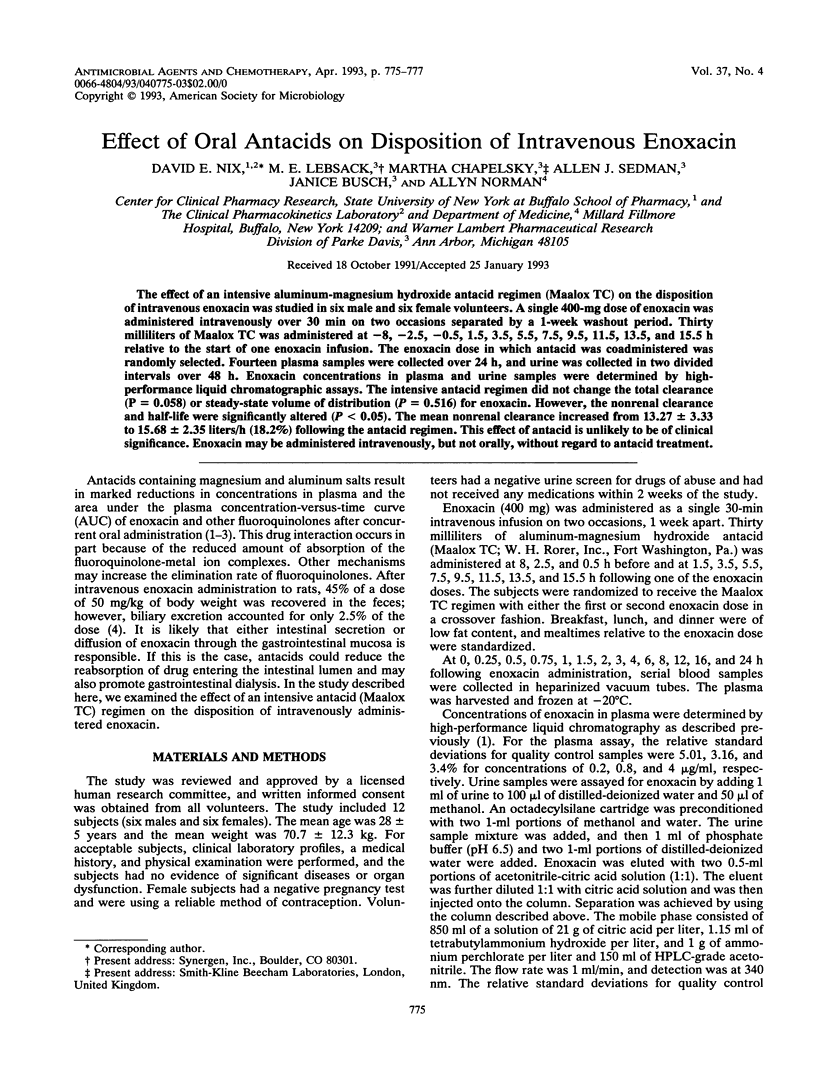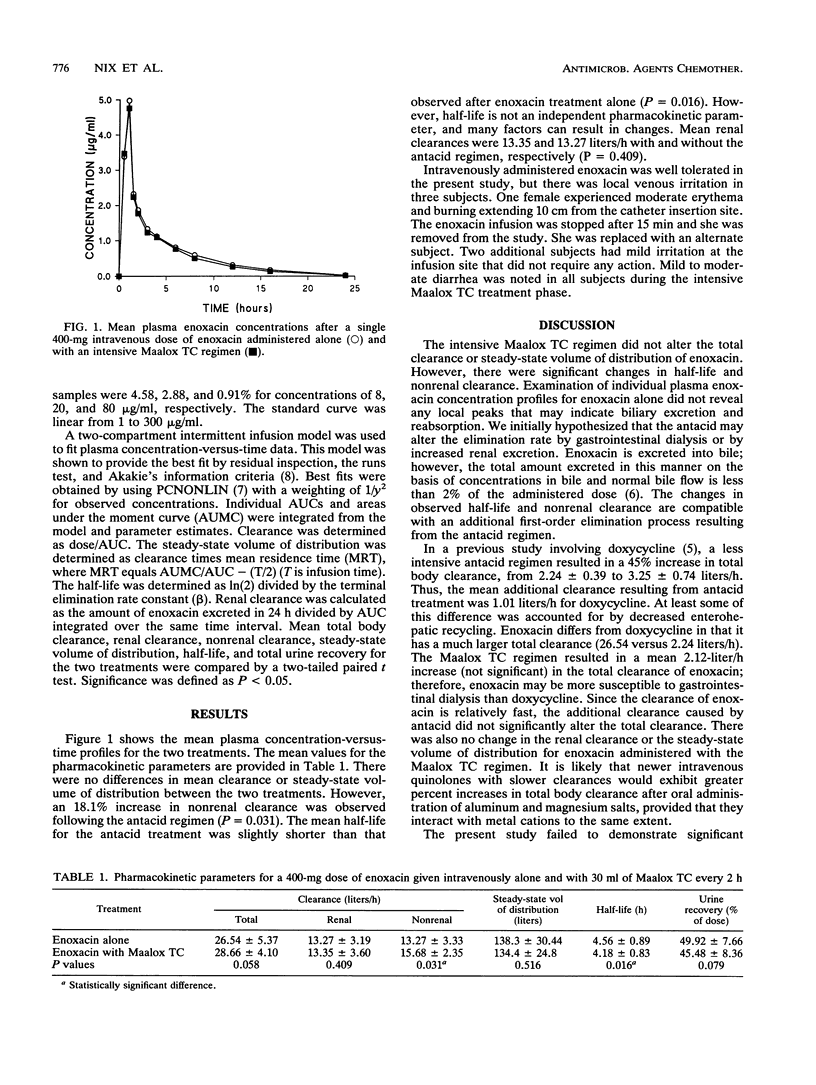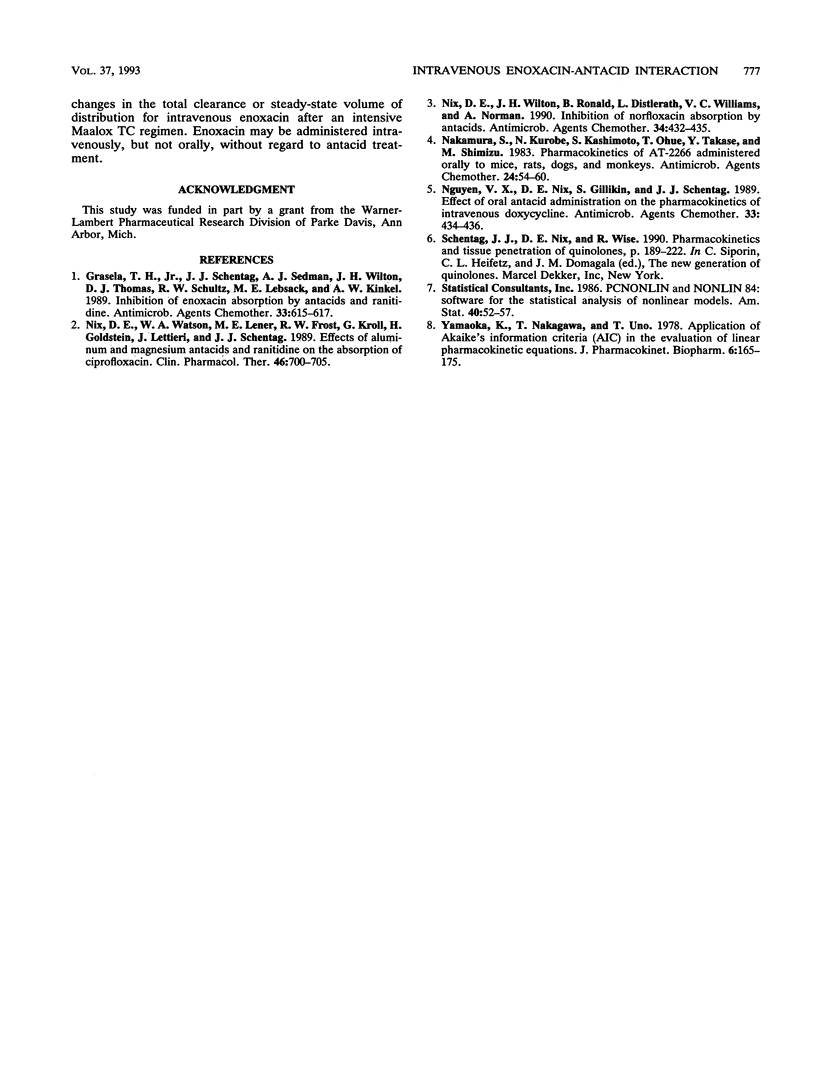Abstract
The effect of an intensive aluminum-magnesium hydroxide antacid regimen (Maalox TC) on the disposition of intravenous enoxacin was studied in six male and six female volunteers. A single 400-mg dose of enoxacin was administered intravenously over 30 min on two occasions separated by a 1-week washout period. Thirty milliliters of Maalox TC was administered at -8, -2.5, -0.5, 1.5, 3.5, 5.5, 7.5, 9.5, 11.5, 13.5, and 15.5 h relative to the start of one enoxacin infusion. The enoxacin dose in which antacid was coadministered was randomly selected. Fourteen plasma samples were collected over 24 h, and urine was collected in two divided intervals over 48 h. Enoxacin concentrations in plasma and urine samples were determined by high-performance liquid chromatographic assays. The intensive antacid regimen did not change the total clearance (P = 0.058) or steady-state volume of distribution (P = 0.516) for enoxacin. However, the nonrenal clearance and half-life were significantly altered (P < 0.05). The mean nonrenal clearance increased from 13.27 +/- 3.33 to 15.68 +/- 2.35 liters/h (18.2%) following the antacid regimen. This effect of antacid is unlikely to be of clinical significance. Enoxacin may be administered intravenously, but not orally, without regard to antacid treatment.
Full text
PDF


Selected References
These references are in PubMed. This may not be the complete list of references from this article.
- Grasela T. H., Jr, Schentag J. J., Sedman A. J., Wilton J. H., Thomas D. J., Schultz R. W., Lebsack M. E., Kinkel A. W. Inhibition of enoxacin absorption by antacids or ranitidine. Antimicrob Agents Chemother. 1989 May;33(5):615–617. doi: 10.1128/aac.33.5.615. [DOI] [PMC free article] [PubMed] [Google Scholar]
- Nakamura S., Kurobe N., Kashimoto S., Ohue T., Takase Y., Shimizu M. Pharmacokinetics of AT-2266 administered orally to mice, rats, dogs, and monkeys. Antimicrob Agents Chemother. 1983 Jul;24(1):54–60. doi: 10.1128/aac.24.1.54. [DOI] [PMC free article] [PubMed] [Google Scholar]
- Nguyen V. X., Nix D. E., Gillikin S., Schentag J. J. Effect of oral antacid administration on the pharmacokinetics of intravenous doxycycline. Antimicrob Agents Chemother. 1989 Apr;33(4):434–436. doi: 10.1128/aac.33.4.434. [DOI] [PMC free article] [PubMed] [Google Scholar]
- Nix D. E., Watson W. A., Lener M. E., Frost R. W., Krol G., Goldstein H., Lettieri J., Schentag J. J. Effects of aluminum and magnesium antacids and ranitidine on the absorption of ciprofloxacin. Clin Pharmacol Ther. 1989 Dec;46(6):700–705. doi: 10.1038/clpt.1989.207. [DOI] [PubMed] [Google Scholar]
- Nix D. E., Wilton J. H., Ronald B., Distlerath L., Williams V. C., Norman A. Inhibition of norfloxacin absorption by antacids. Antimicrob Agents Chemother. 1990 Mar;34(3):432–435. doi: 10.1128/aac.34.3.432. [DOI] [PMC free article] [PubMed] [Google Scholar]
- Yamaoka K., Nakagawa T., Uno T. Application of Akaike's information criterion (AIC) in the evaluation of linear pharmacokinetic equations. J Pharmacokinet Biopharm. 1978 Apr;6(2):165–175. doi: 10.1007/BF01117450. [DOI] [PubMed] [Google Scholar]


